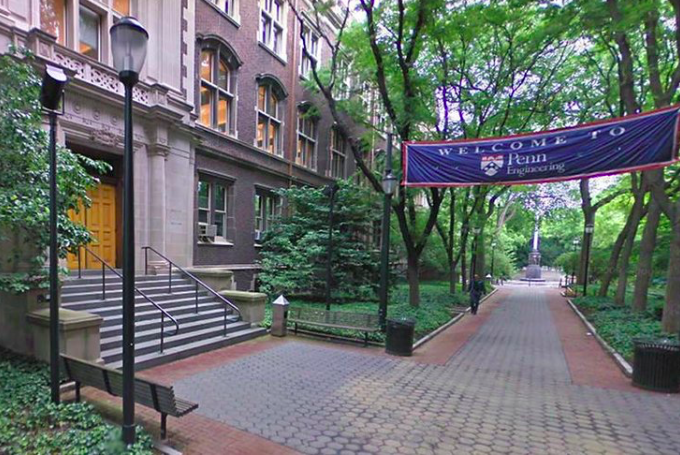
July 24, 2019
 Source/Google Streetview
Source/Google Streetview
Bioengineers at the University of Pennsylvania demonstrated a genome-folding technique called light-activated dynamic looping (LADL). The method that allows researchers to examine the mechanisms that combine DNA segments and influence gene expression within the cell nucleus. .
A new biotechnology developed by engineers at the University of Pennsylvania will help researchers better understand the mechanisms behind the expression of genes, utilizing light to simulate the folding of the genome contained within cells.
Scientists in Penn's department of bioengineering have demonstrated a technique known light-activated dynamic looping (LADL) to examine the role of genome folding and how it translates individual genes into proteins.
The research is at the forefront of a field called "3-D epigenetics," which aims to recreate the minute loops and sequences that form through contact between genomic segments.
"In recent years, scientists in our fields have overcome technical and experimental challenges in order to create ultra-high resolution maps of how the DNA folds into intricate 3D patterns within the nucleus," said Jennifer Phillips-Cremins, an assistant professor in the department of bioengineering. "Although we are now capable of visualizing the topological structures, such as loops, there is a critical gap in knowledge in how genome structure configurations contribute to genome function."
LADL uses a modification of the genome editing tool CRISPR/Cas9 and optogenetics to target specific genome folds and direct them to interact with each other on demand. The technology enables scientists to create temporary loops between exact genomic segments in a matter of hours.
To bind desired DNA loops together, Cremins' team turned to a pair of proteins found in the flowering plant Arabidopsis. The two proteins bind together when exposed to blue light.
"Once we turn the light on, these mechanisms begin working in a matter of milliseconds and make loops within four hours," said lab member Mayuri Rege, who co-led the study. "And when we turn the light off, the proteins disassociate, meaning that we expect the loop to fall apart."
The technical achievement takes place on a scale whose margin for error is a few atoms, avoiding incidental contact that might skew results by impacting surrounding genome fragments. The genome-folding also is induced at speeds that can accurately simulate the way gene sequences form loops.
"It is critical to understand the genome structure-function relationship on short timescales because the spatiotemporal regulation of gene expression is essential to faithful human development and because the mis-expression of genes often goes wrong in human disease," Phillips-Cremins said. "The engineering of genome topology with light opens up new possibilities to understanding the cause-and-effect of this relationship. Moreover we anticipate that, over the long term, the use of light will allow us to target specific human tissues and even to control looping in specific neuron subtypes in the brain."
Researchers hope LADL will play a role in developing treatments for neurodevelopmental diseases that Cremins' lab has linked to these genetic mechanisms in previous studies.
The current study, published in the July edition of the journal Nature Methods, was supported by the the New York Stem Cell Foundation, Alfred P. Sloan Foundation, the National Institutes of Health and National Science Foundation.